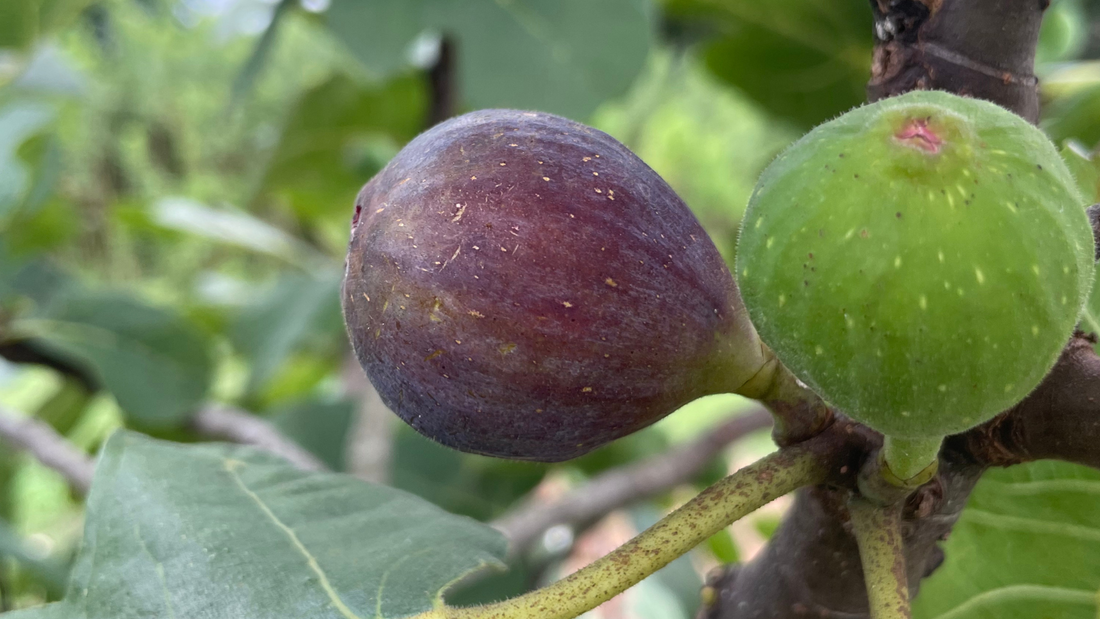Just like any other garden plant or fruit tree on your homestead, fig trees will benefit from having ample nutrients in the soil around the tree. A fig tree can grow in pretty poor soils, but it will grow much better if it has a constant supply of nutrients. As we mentioned in a previous blog, the main crop of figs is formed on new growth. The more new growth you can encourage, the more figs your trees will produce.
When to Fertilize Fig Trees
Let's start by discussing the best times to fertilize fig trees, and then we'll cover fertilizers to use and application methods.
1) At Planting
It's always a good idea to add a little granular fertilizer when planting a new fig tree in the ground or moving a fig tree to a larger pot. Sprinkle a couple handfuls of our Coop Gro Fertilizer around the base of the planting hole and lightly incorporate it into the soil with your hands or a rake. We also like to add compost around the tree when planting a young fig tree in the ground. This helps to build a nice base of organic matter and promote healthy soil biology around the fig tree.

2) Late Winter or Early Spring
Depending on where you live, your fig trees may "wake up" at different times. Our fig trees usually break dormancy in late February to early March in most years. You'll want to time fertilization with this break in dormancy so that the fig tree has plenty of nutrients as it starts adding new limbs, leaves, and figs. The more nutrients the fig tree has in the spring, the more new growth it will add. The more new growth it adds, the more figs you'll harvest.

3) Late Summer or Early Fall
Here in south Georgia, our figs will start growing again after the summer heat subsides a bit in September. This usually results in a fall crop of figs that form on the new growth on most of our trees. For the same reasons we like to fertilize the fig trees in the late winter and early spring seasons, we'll want to feed them again during this time. Even if your fig trees don't grow much in the late summer and fall months, feeding during this time ensures you'll have a nice nutrient supply in the soil throughout the winter and going into next spring.
How to Fertilize Fig Trees
There are lots of good options for fertilizing fig trees. We prefer to use organic fertilizers on our trees, but you can certainly use synthetic fertilizers if you want. You do need to be careful with synthetic fertilizers on young trees. Too much synthetic fertilizer can overload the soil and burn young fig trees, so use it sparingly in the beginning.
We recommend using a somewhat balanced fertilizer for fig trees. Choose something that has relatively equal percentages of nitrogen, phosphorus, and potassium in the guaranteed analysis on the packaging. There are three primary nutrient sources we use to feed our fig trees are:
1) Compost
As mentioned above, we always add a couple shovels full of compost when adding a new fig tree to our orchard. Although our soils drain pretty well, this improves drainage around the base of the tree. It also adds organic matter that helps to retain nutrients throughout the growing season. We use a local compost made from composted wood chips, but use what you can find.
This is a granular organic fertilizer made from chicken manure. It has a somewhat balanced 3-3-4 analysis which is ideal for fig trees. It's easy to apply around the base of the tree at planting and as the fig tree grows. We usually add a couple handfuls around the base of each tree. We'll use 3-4 handfuls for larger, more established figs trees in our orchard.

3) AgroThrive Fruit & Flower Fertilizer
This is a liquid organic fertilizer made from fish and corn steep liquor. It is a "pre-digested" formula which means it works much faster than traditional liquid organic fertilizers. You can mix it in a 5 gallon bucket and pour around the base of the fig tree, or inject it through an irrigation system. We prefer the injection route since we already have an irrigation system for our fig orchard. This makes it really easy to feed our trees whenever we want.


